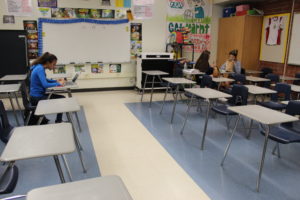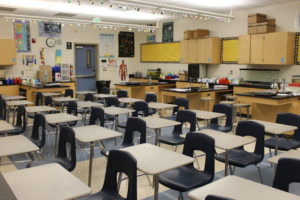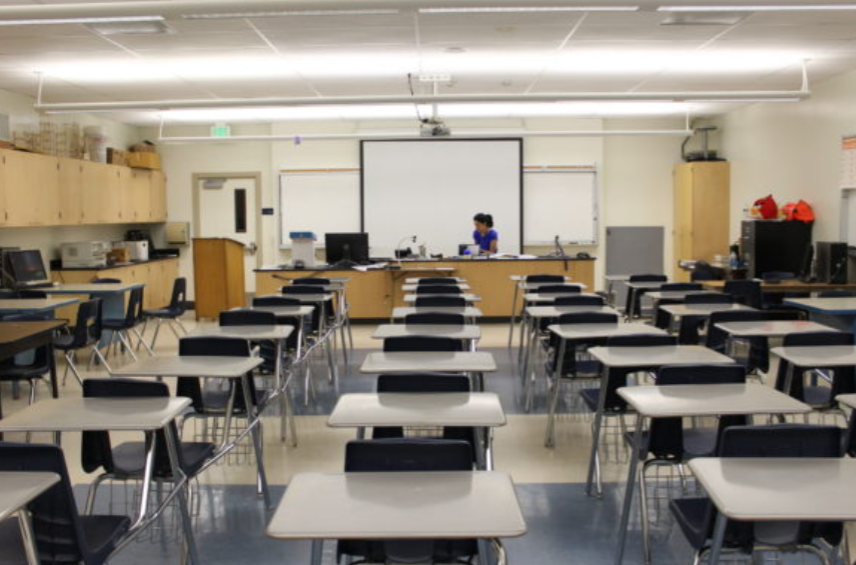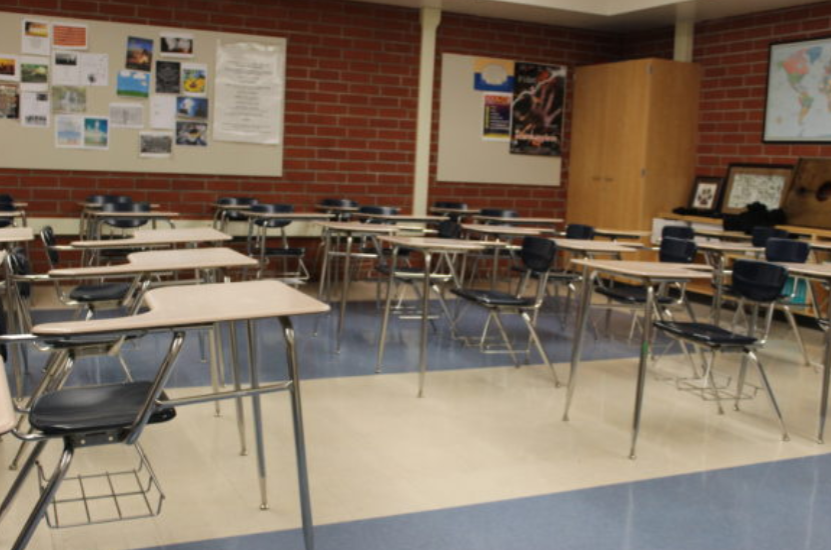by Benjamin Minch, Staff Writer
When you walk into a classroom for the first time, you rarely think anything of the way the desks are arranged, the importance is in the people surrounding your seat. Many would overlook this feature, but seating arrangements of classrooms are one of the most important factors in contributing to the learning experience of the classroom. Seating arrangements can encourage students to cooperate, keep them from cheating, make it easier to access learning material such as a whiteboard and even contribute to the mental outlook on a class.
At Fountain Valley High School, after walking around and surveying over 75 classrooms, I have determined that there are five basic categories that all classroom seating arrangements can fall under: facing each other, wide class, amphitheatre, groups of four and long traditional classrooms.

When walking into a classroom where desks facing each other, you can infer that this class will be very lecture heavy with student interactive learning using whiteboards. These classrooms are predominantly world languages and English classrooms, with 16 in total. Classes of this type are usually lecture-based because students must learn a completely new language or new grammatical tips. Out of all the foreign language classes surveyed, nine of them showed this arrangement and half of the english classrooms also showed this pattern. Classrooms of this type according to Spanish teacher, Allison Gomez “are more efficient because there are usually two whiteboards in the classes.”

Photo by Jamie Pham
The most common type of classroom at FVHS is the wide classroom, where there are more seats across than rows back. These classrooms are predominantly science classrooms, but there are also many math, history and art classrooms that are this style. One of the major benefits of this classroom type is that no student is stuck in the back where they cannot see. This encourages students to focus on the front of class as well, and discourages talking amongst students. Teachers would most likely be using this arrangement if they lecture a lot, or want to keep troublesome students in control.

Most math classes follow the “pods” format, where seats are arranged in groups of four. Many teachers like this style of classroom because it allows students to help each other with work and collaborate together to help one another. Classrooms with pod seating are very student focused, with very little lecture and a focus on experiential learning.
Some math teachers, such as Leslie Murray, are against this type of seating “because they encourage too much talking and some students are unable to see the board”. Murray also states that a wide classroom is “easier to stamp homework and there is more room around the classroom to walk around.”

The most ancient seating arrangement of classrooms, which is still relevant at FVHS, is the long classroom. In this arrangement, the back of the classroom is very far away from the front of the classroom, so it is often hard to pay attention in the back. Classrooms of this type however, utilize this distance very well. Most of these classes have computers at each desk, and students do independent work. Long classrooms help separate students so they can work efficiently and learn on their own without distractions.

The least common of all of these classroom arrangements is the amphitheatre type of classroom, with seats on three sides of the class. Some teachers such as Cory Nelson “use this style because they split into groups often to compete or collaborate”. For example, in his AP United States History class, Nelson separated the class into three sections for the Civil War reenactment and they battled each other with questions. Amphitheater classrooms only make up six of the many classrooms of FVHS, but these classrooms are truly unique in their teaching styles. They offer creative and competitive environments, where projects are often created in groups. When entering a classroom with this seating type, you should expect to have some friendly competition and group presentations with creative ideas.
Classroom arrangements can play a big psychological role on the student and affect the different interactions they make along the day. Hopefully you now have an idea of what these different arrangements are used for, so it can help you make decisions about whether or not it is a good fit for you.





